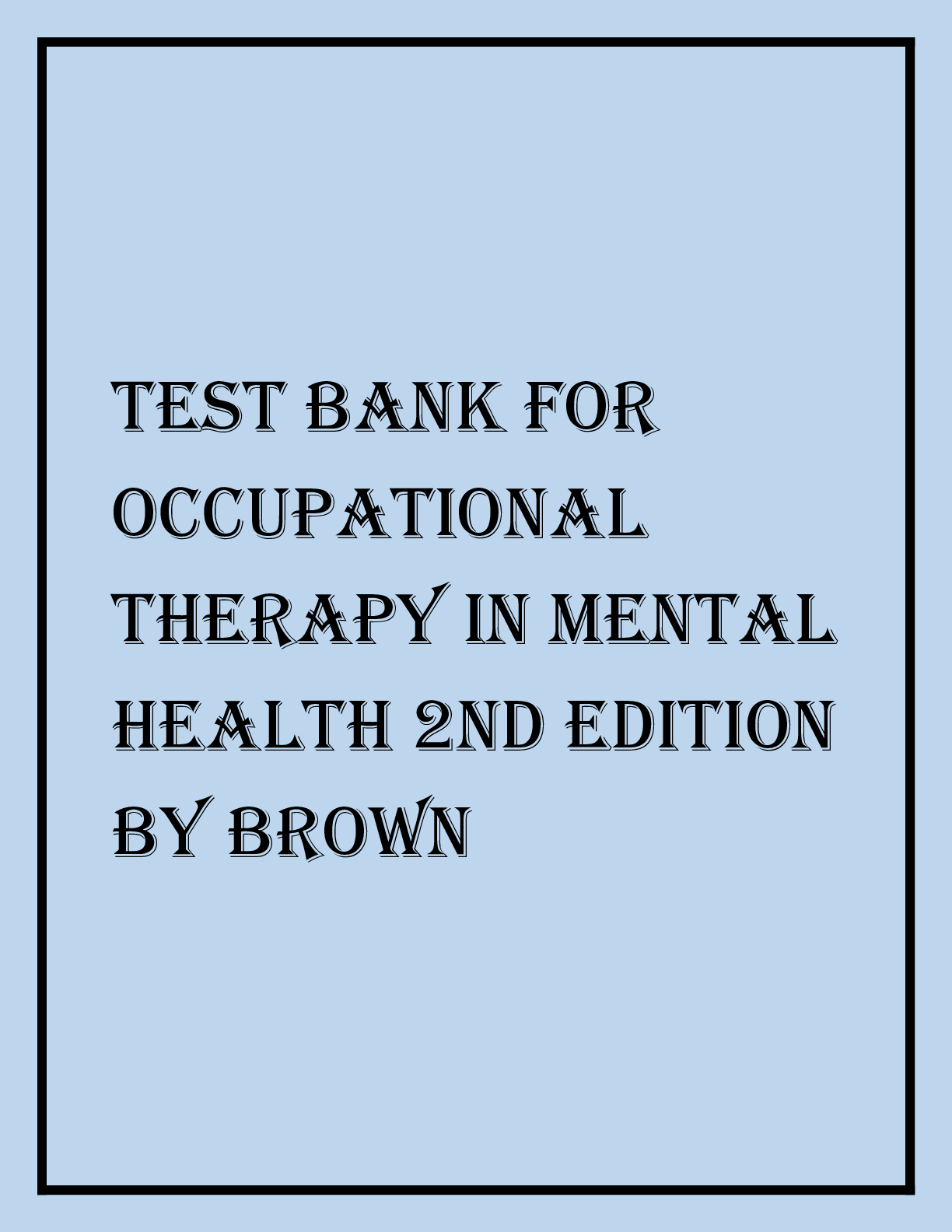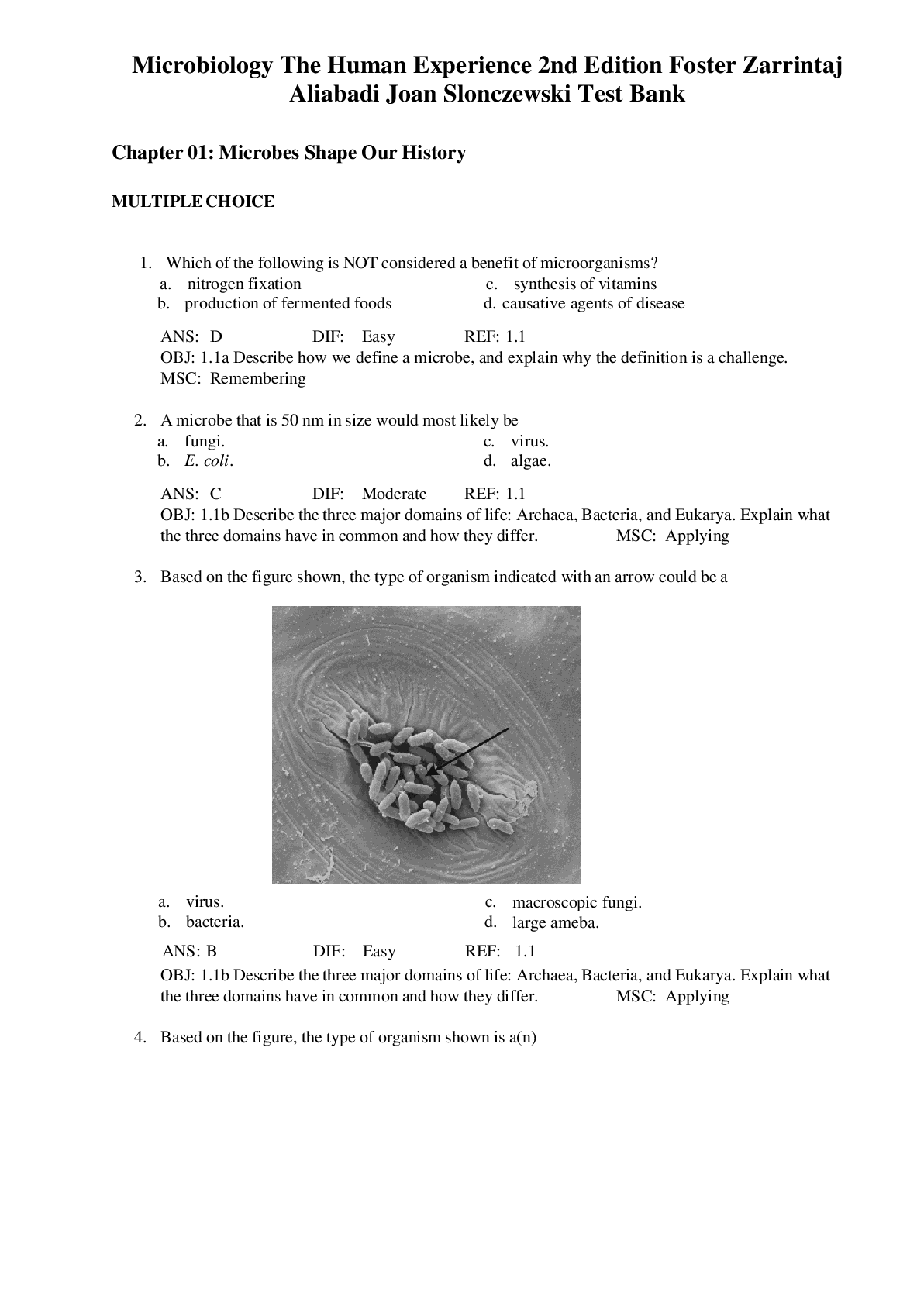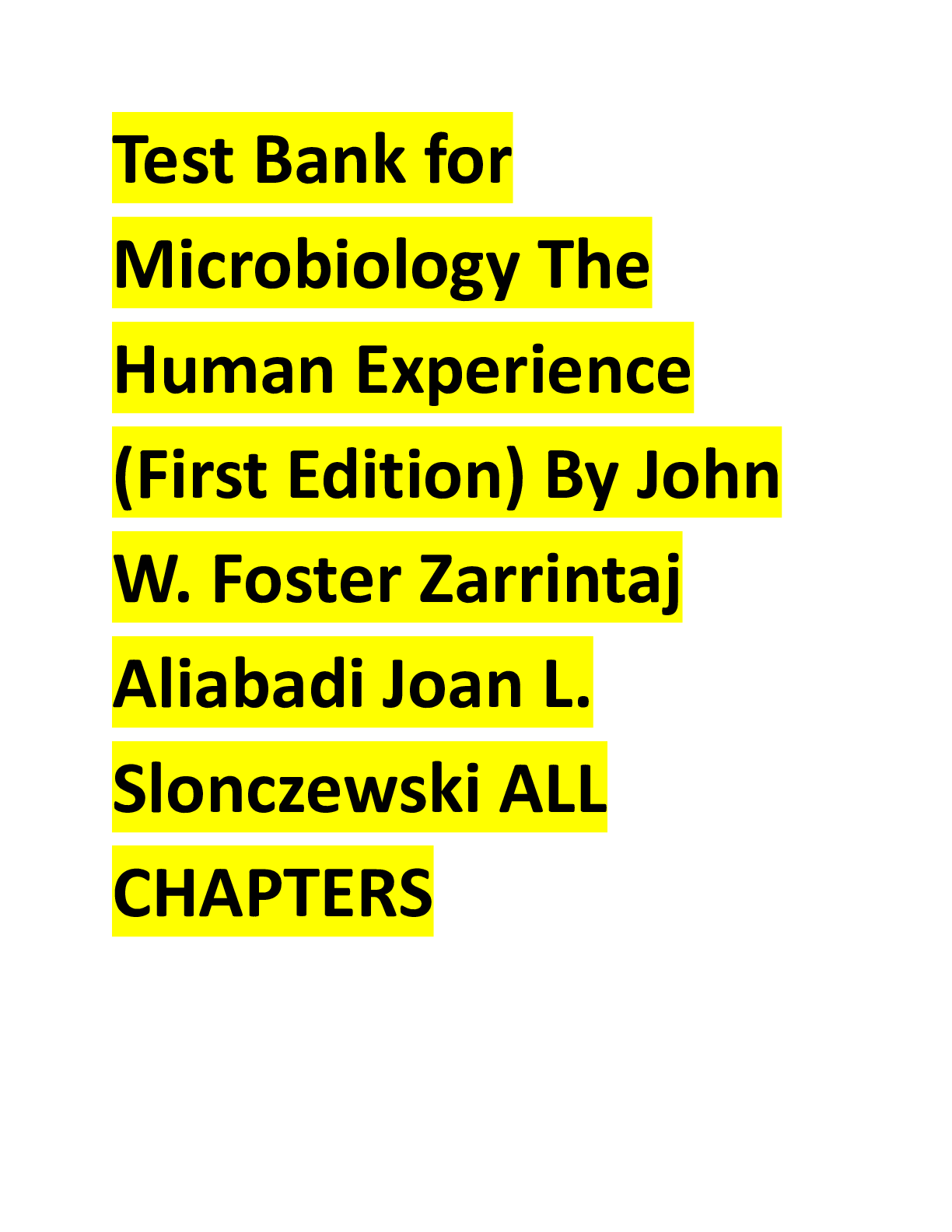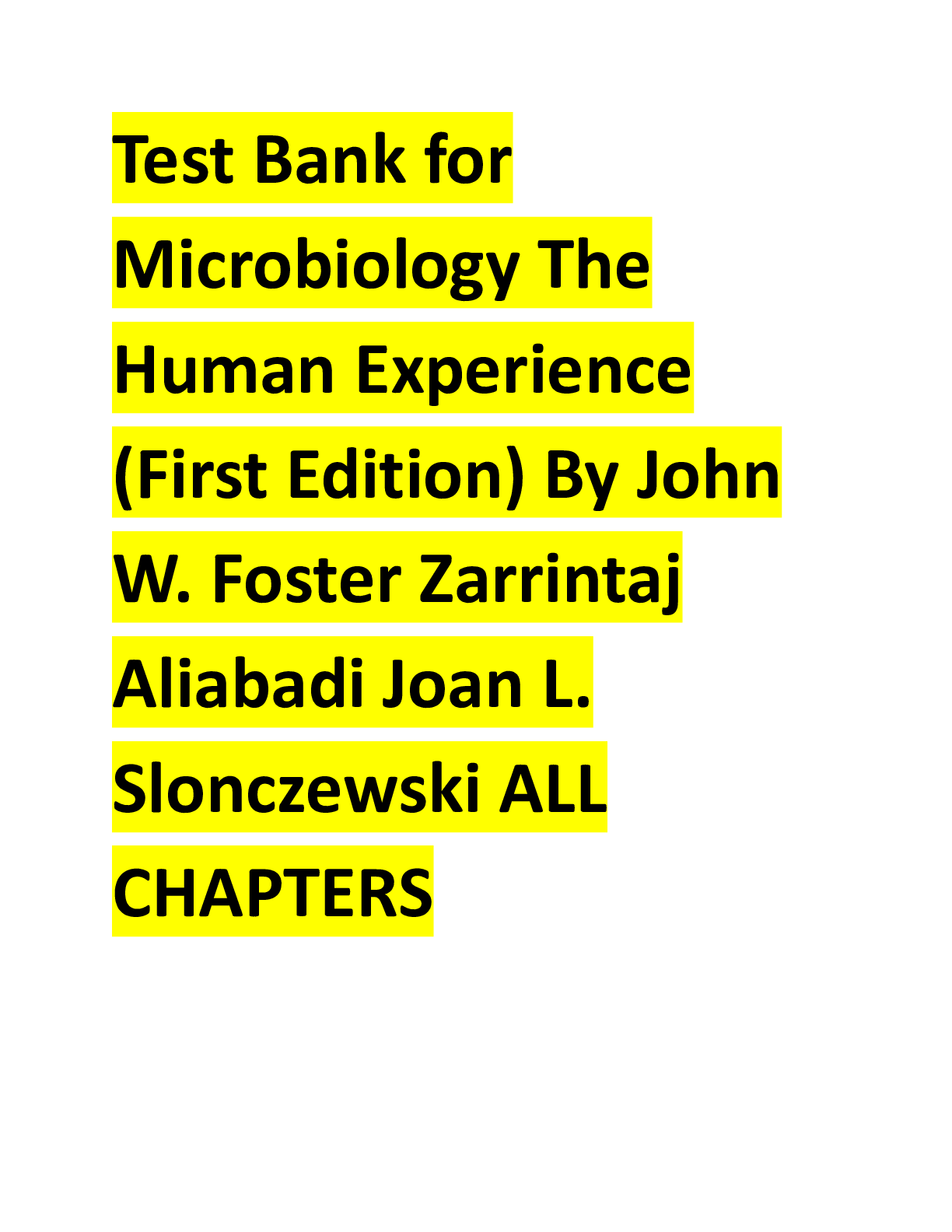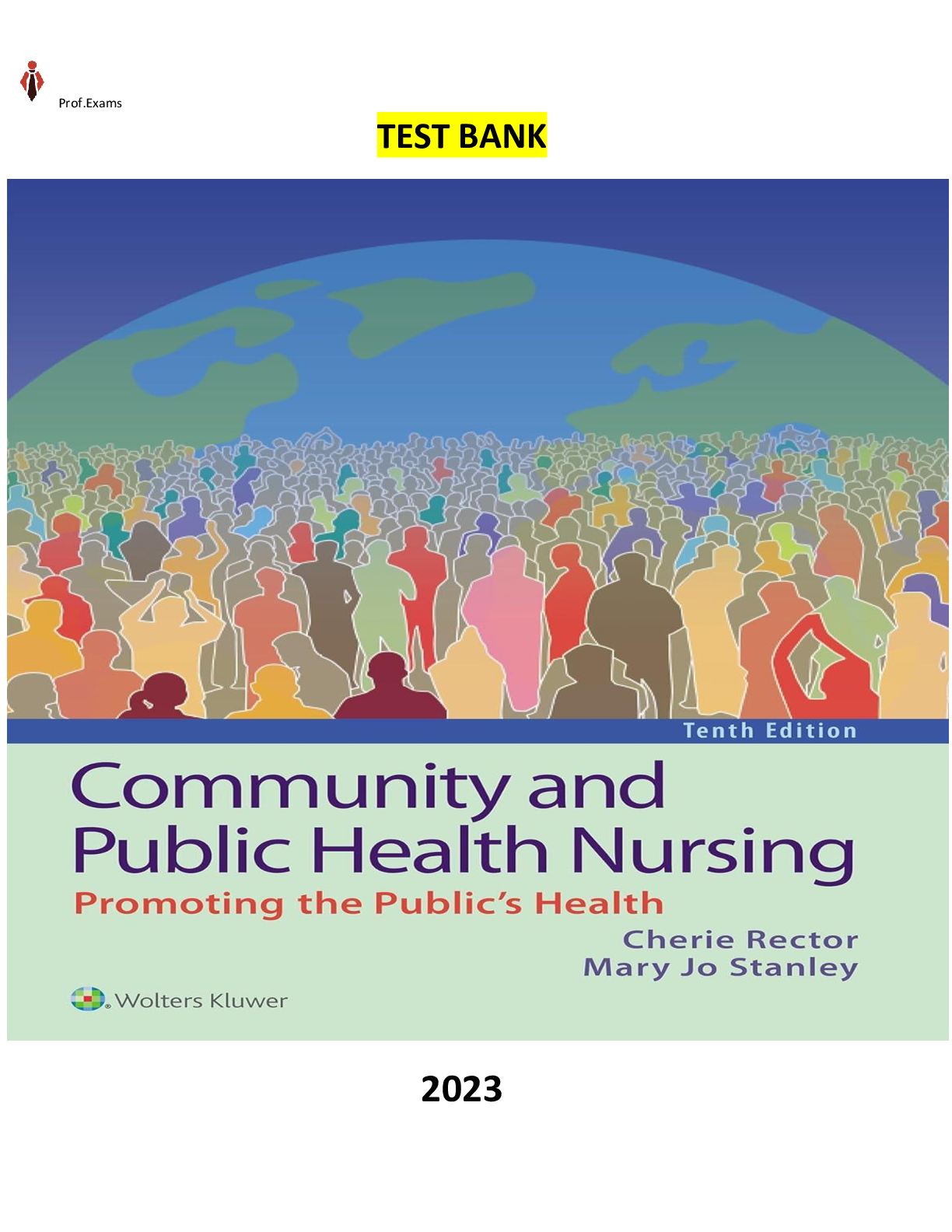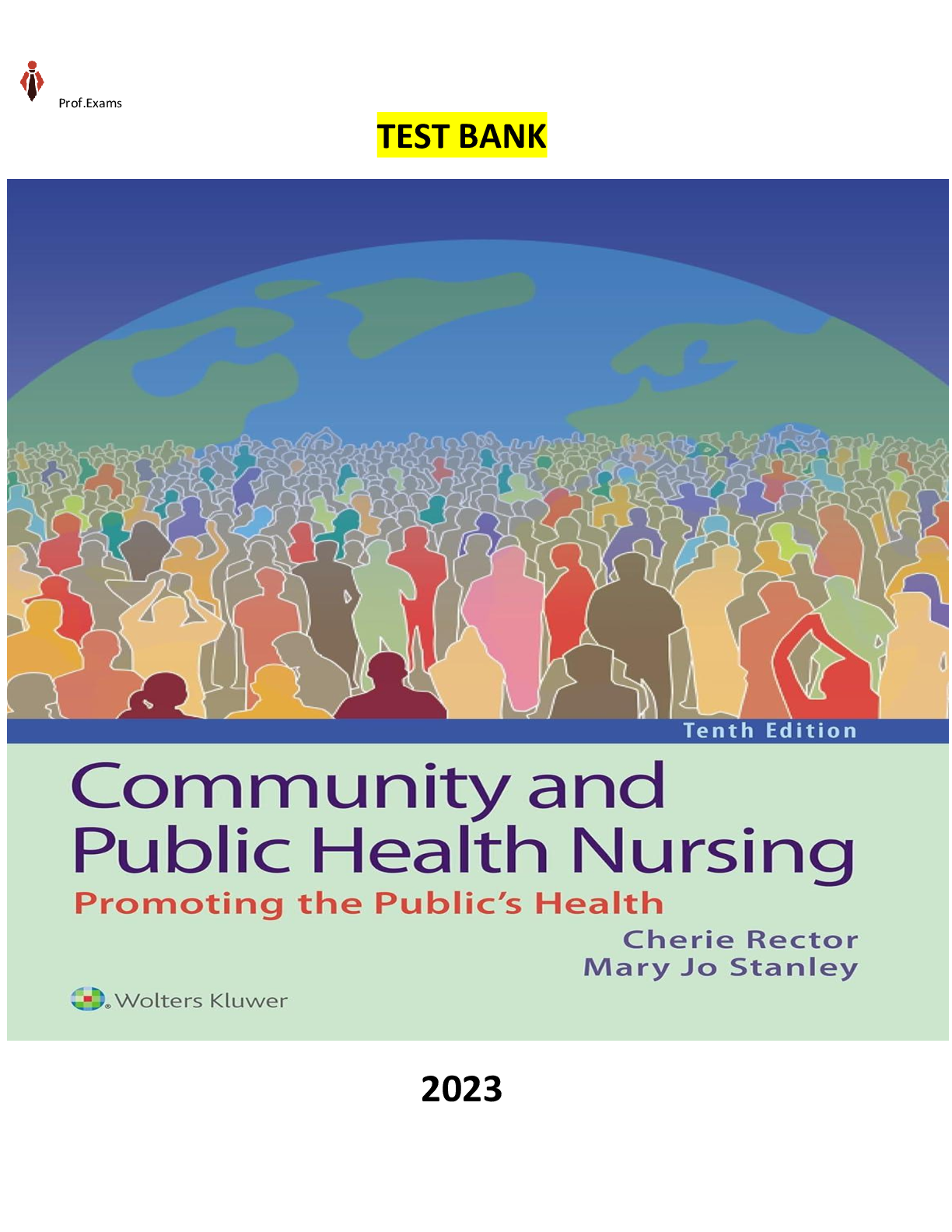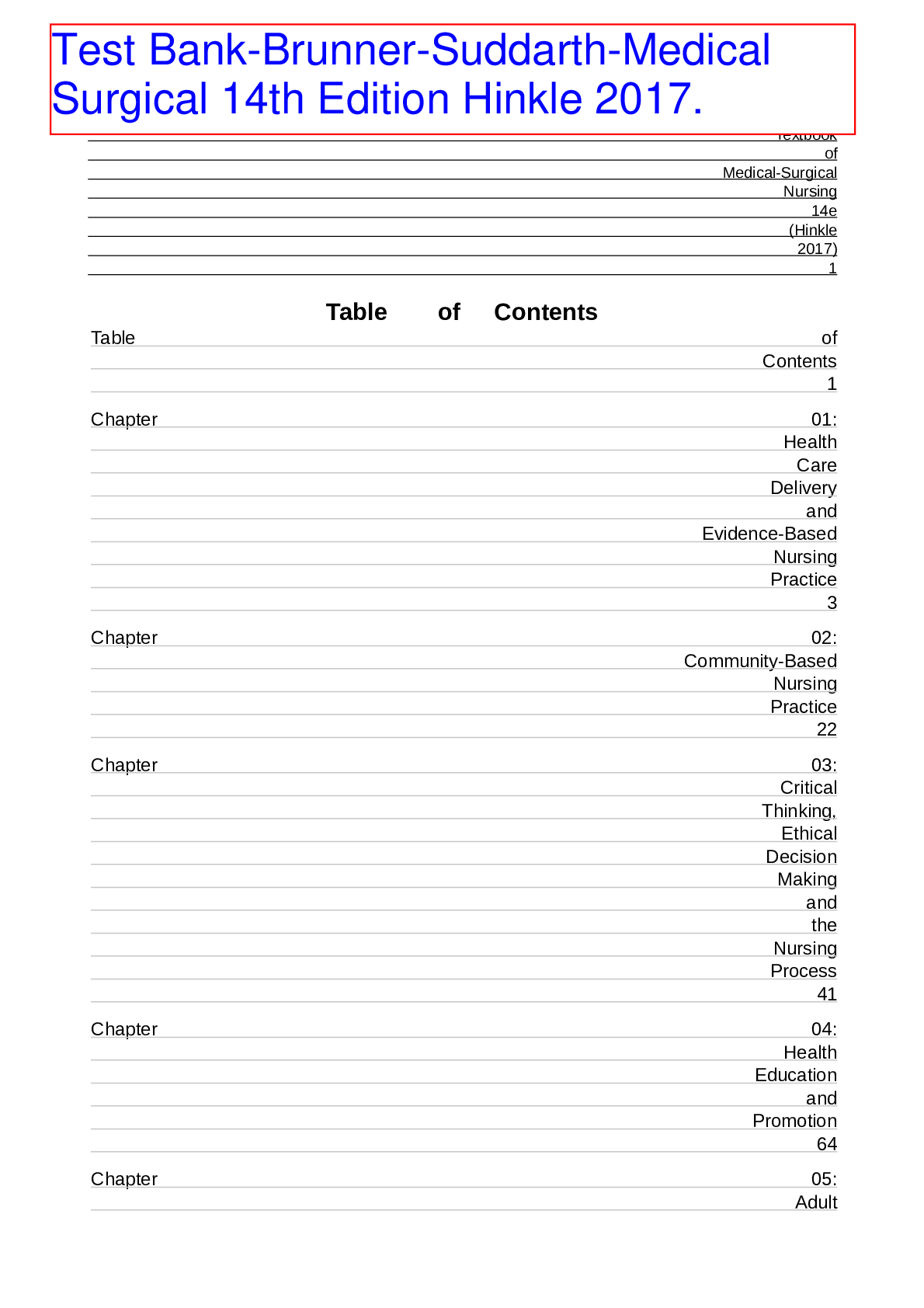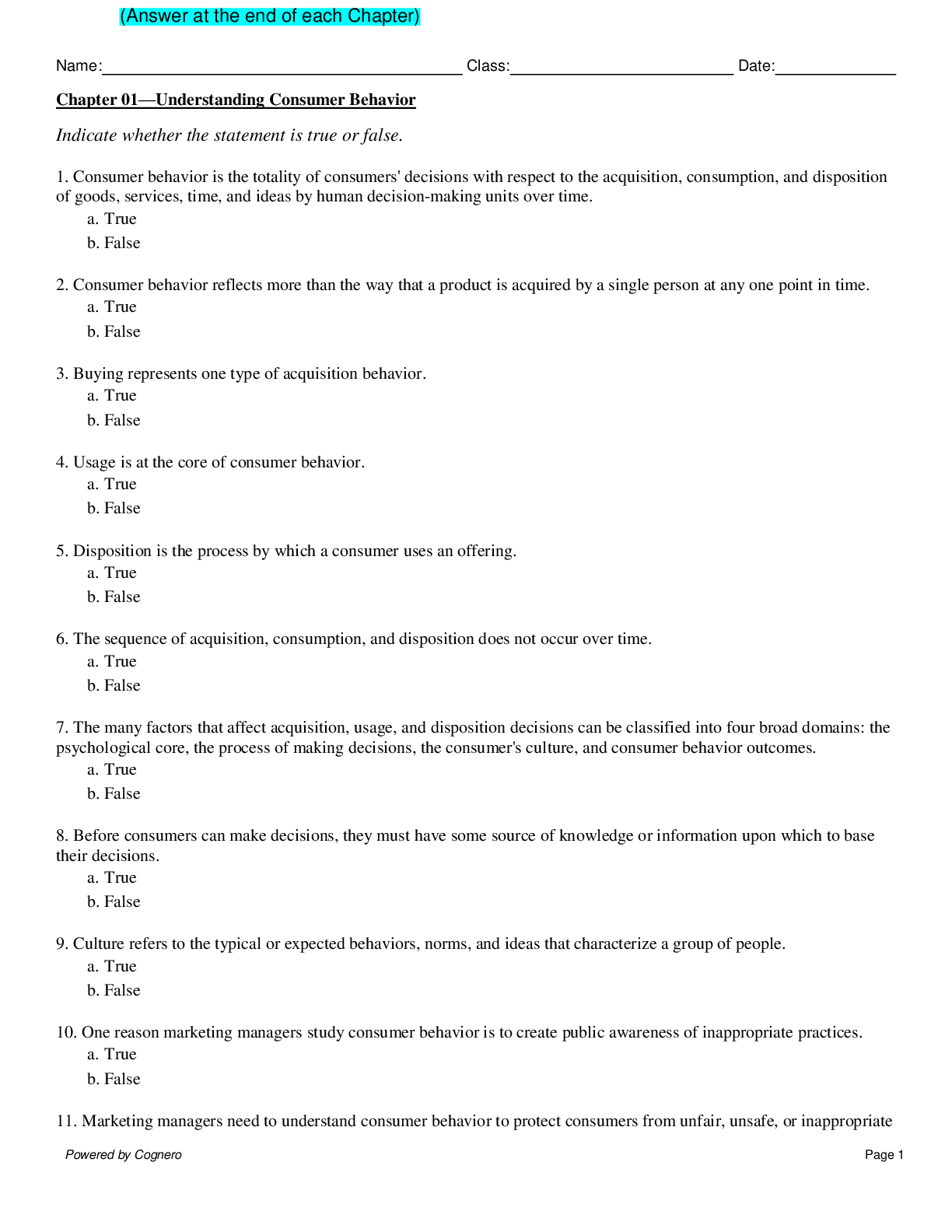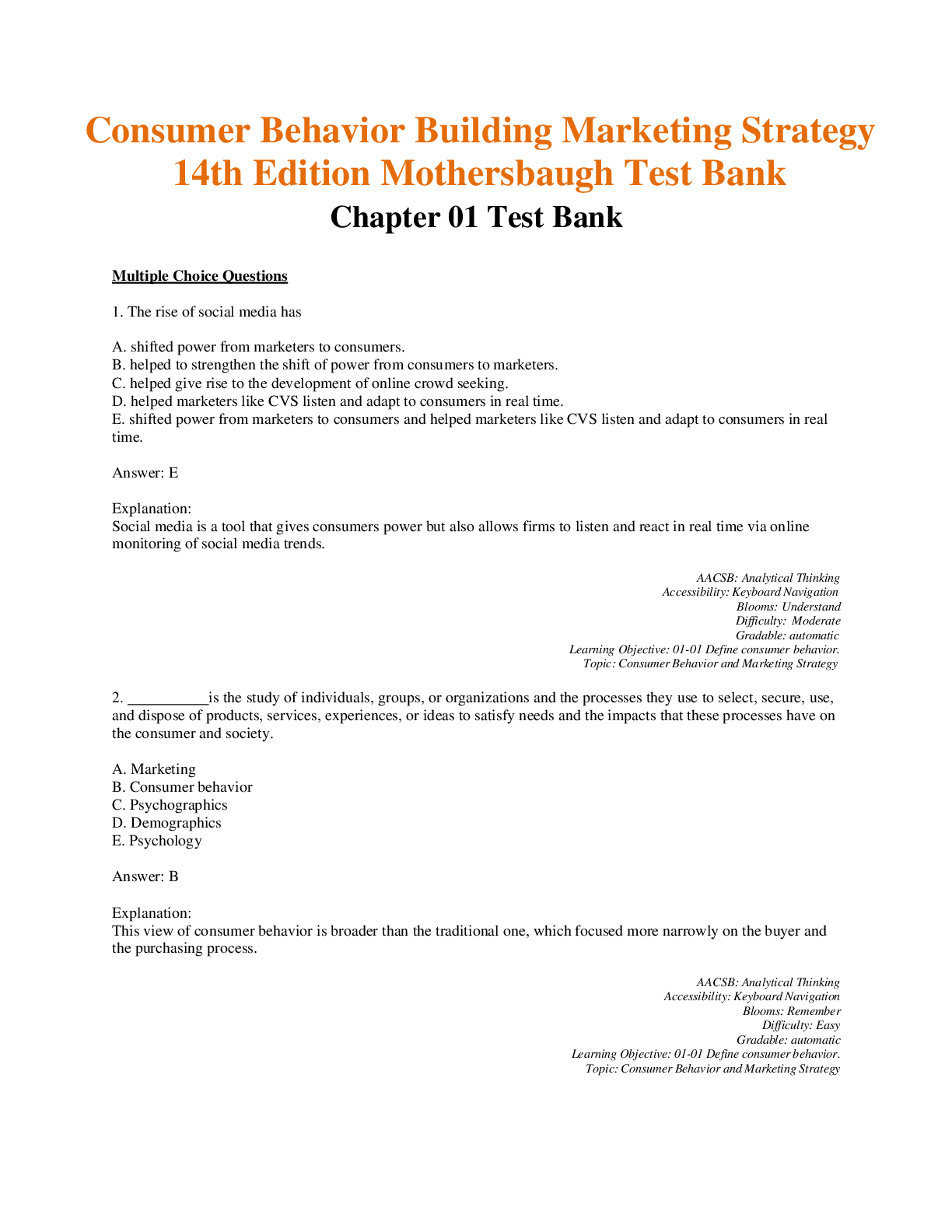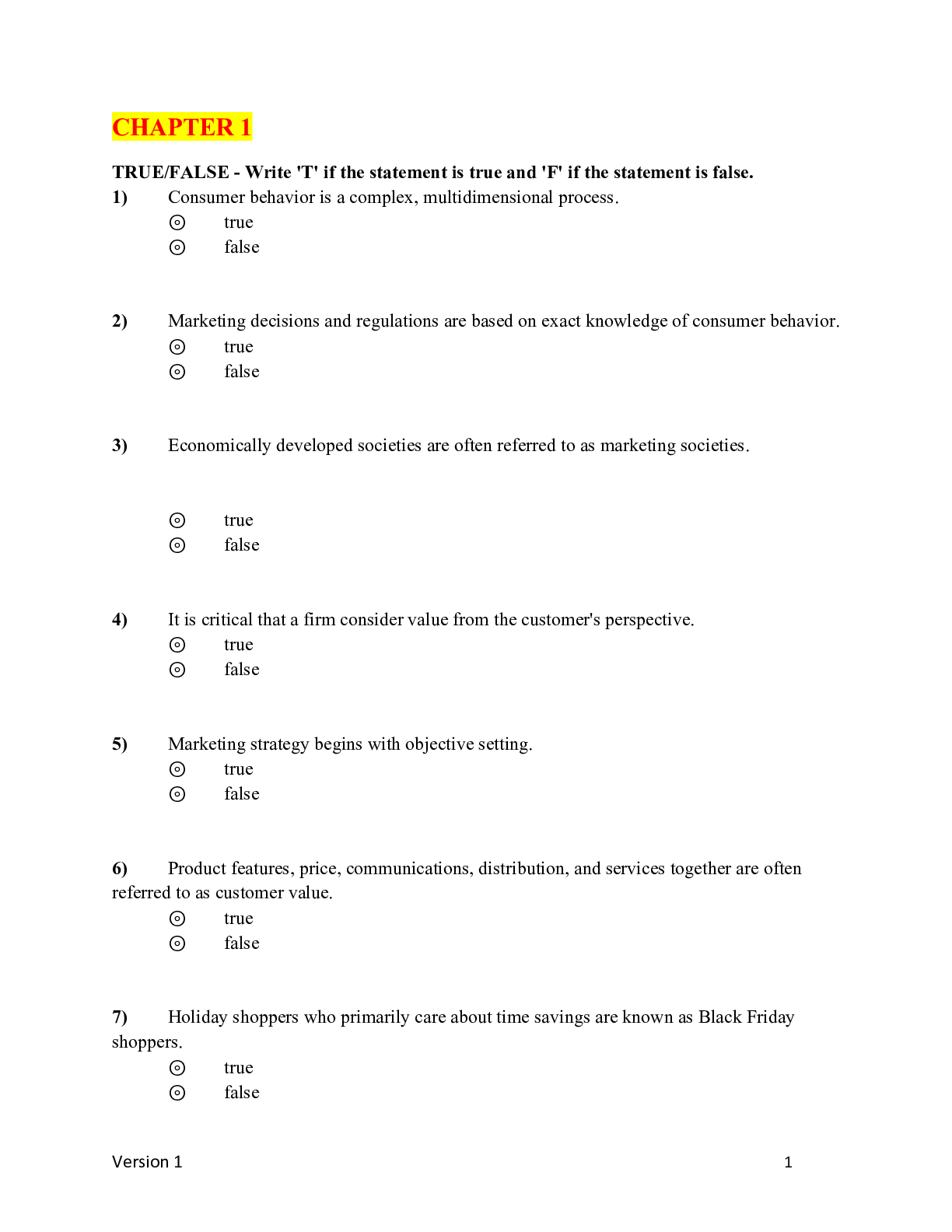Micro Biology > TEST BANK > Test Bank for Microbiology The Human Experience 1st Edition by Foster (All)
Test Bank for Microbiology The Human Experience 1st Edition by Foster
Document Content and Description Below
Chapter 01: Microbes Shape Our History MULTIPLE CHOICE 1. Which of the following is NOT considered a benefit of microorganisms? a. nitrogen fixation c. synthesis of vitamins b. production of ferme... nted foods d. causative agents of disease ANS: D DIF: Easy REF: 1.1 OBJ: 1.1a Describe how we define a microbe, and explain why the definition is a challenge. MSC: Remembering 2. A microbe that is 50 nm in size would most likely be a. fungi. c. virus. b. E. coli. d. algae. ANS: C DIF: Moderate REF: 1.1 OBJ: 1.1b Describe the three major domains of life: Archaea, Bacteria, and Eukarya. Explain what the three domains have in common and how they differ. MSC: Applying 3. Based on the figure shown, the type of organism indicated with an arrow could be a a. virus. c. macroscopic fungi. b. bacteria. d. large ameba. ANS: B DIF: Easy REF: 1.1 OBJ: 1.1b Describe the three major domains of life: Archaea, Bacteria, and Eukarya. Explain what the three domains have in common and how they differ. MSC: Applying 4. Based on the figure, the type of organism shown is a(n) a. virus. c. archaea. b. bacteria. d. eukaryote. ANS: D DIF: Moderate REF: 1.1 OBJ: 1.1b Describe the three major domains of life: Archaea, Bacteria, and Eukarya. Explain what the three domains have in common and how they differ. MSC: Applying 5. Which of the following demonstrates correct scientific notation of a bacterial organism? a. Staphylococcus Epidermidis c. Staphylococcus epidermidis b. Staphylococcus epidermidis d. Staphylococcus Epidermidis ANS: C DIF: Easy REF: 1.1 OBJ: 1.1b Describe the three major domains of life: Archaea, Bacteria, and Eukarya. Explain what the three domains have in common and how they differ. MSC: Applying 6. Which key characteristic differentiates a prokaryote from a eukaryote? a. the absence of proteins b. the presence of DNA c. the absence of membrane-bound organelles d. the presence of a cell wall ANS: C DIF: Easy REF: 1.1 OBJ: 1.1b Describe the three major domains of life: Archaea, Bacteria, and Eukarya. Explain what the three domains have in common and how they differ. MSC: Remembering 7. Which of the following methods for classifying life forms can best be used to distinguish between two closely related rod-shaped bacterial organisms, Salmonella typhimurium and Escherichia coli? a. physical characteristics c. DNA sequence comparison b. method of reproduction d. environmental habitat ANS: C DIF: Moderate REF: 1.1 OBJ: 1.1b Describe the three major domains of life: Archaea, Bacteria, and Eukarya. Explain what the three domains have in common and how they differ. MSC: Applying 8. Which of the following is always classified as a eukaryote? a. papillomavirus c. Escherichia coli b. methanogen d. yeast ANS: D DIF: Moderate REF: 1.1 OBJ: 1.1b Describe the three major domains of life: Archaea, Bacteria, and Eukarya. Explain what the three domains have in common and how they differ. MSC: Understanding 9. Which of the following has been used as a tool for gene therapy? a. viruses c. protozoa b. archaea d. fungi ANS: A DIF: Easy REF: 1.1 OBJ: 1.1b Describe the three major domains of life: Archaea, Bacteria, and Eukarya. Explain what the three domains have in common and how they differ. MSC: Understanding 10. Which of the following would you not expect to find in the human digestive tract? a. archaea c. bacteria b. algae d. intestinal viruses ANS: B DIF: Moderate REF: 1.1 OBJ: 1.1b Describe the three major domains of life: Archaea, Bacteria, and Eukarya. Explain what the three domains have in common and how they differ. MSC: Understanding 11. Antibiotics are chemotherapeutic drugs that function by inhibiting an important cellular structure or process of an organism that is causing an infection. Which of the following would not be affected by an antibiotic that targets cellular metabolic enzymes? a. Streptococcus pyogenes bacteria c. ameba b. Herpes virus d. bread mold ANS: B DIF: Moderate REF: 1.1 OBJ: 1.1c Define viruses, and explain how they relate to living cells. MSC: Analyzing 12. Which scientist is credited with constructing the first microscope? a. Antonie van Leeuwenhoek c. Robert Hooke b. Catherine of Siena d. Louis Pasteur ANS: C DIF: Easy REF: 1.2 OBJ: 1.2a Explain how microbial diseases have changed human history. MSC: Remembering 13. Which of the following was an unexpected benefit of the bubonic plague? a. There was no benefit to the bubonic plague. b. The population of Europe experienced a baby boom. c. It resulted in a better understanding of aseptic practices and how to prevent the spread of infection. d. The population decline enabled the cultural advancement of the Renaissance. ANS: D DIF: Easy REF: 1.2 OBJ: 1.2a Explain how microbial diseases have changed human history. MSC: Understanding 14. Which of the following organisms would you NOT be able to see using Robert Hooke’s microscope? a. vinegar eels c. mold filaments b. dust mites d. Mycobacterium tuberculosis ANS: D DIF: Moderate REF: 1.2 [Show More]
Last updated: 11 months ago
Preview 1 out of 16 pages
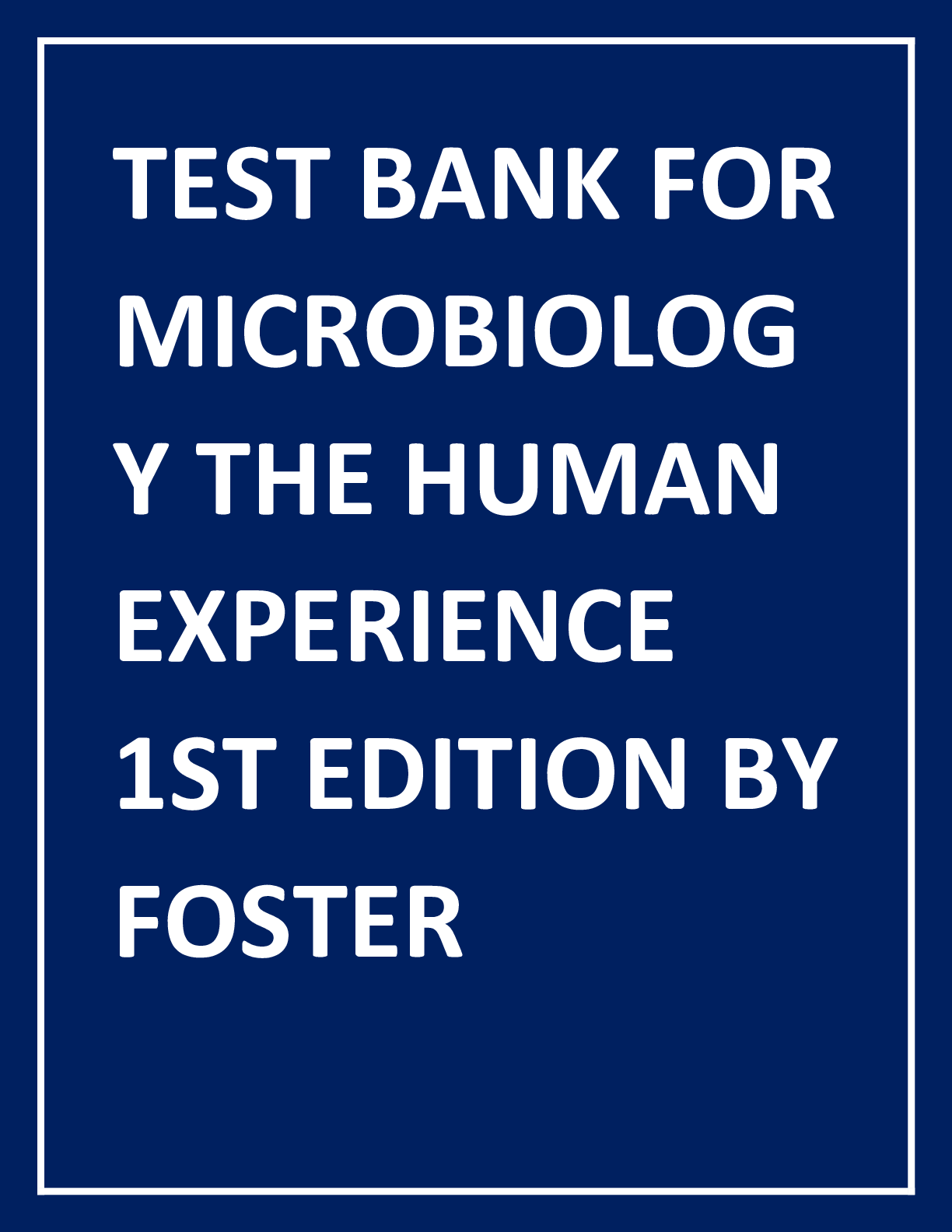
Reviews( 0 )
Document information
Connected school, study & course
About the document
Uploaded On
Dec 29, 2022
Number of pages
16
Written in
Additional information
This document has been written for:
Uploaded
Dec 29, 2022
Downloads
0
Views
33


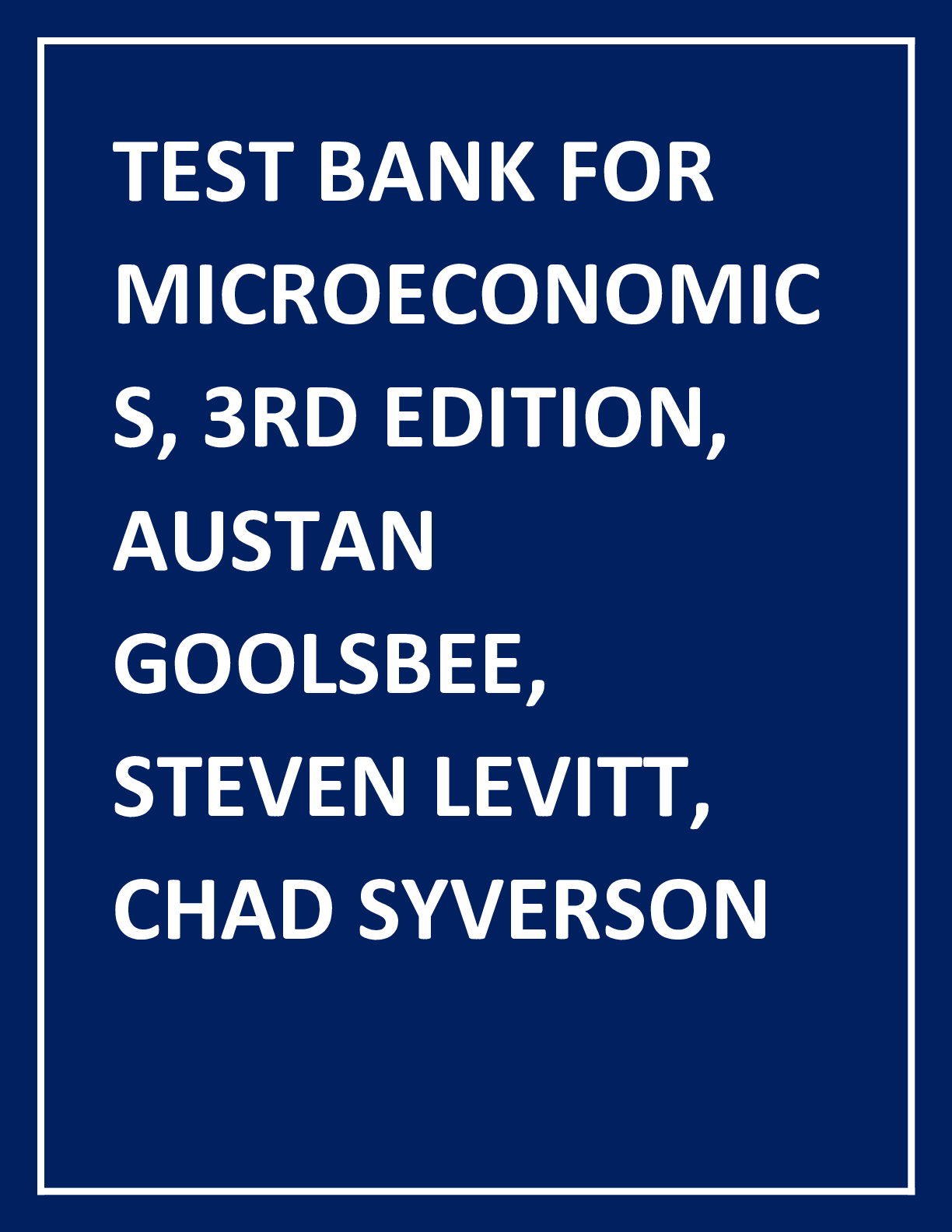
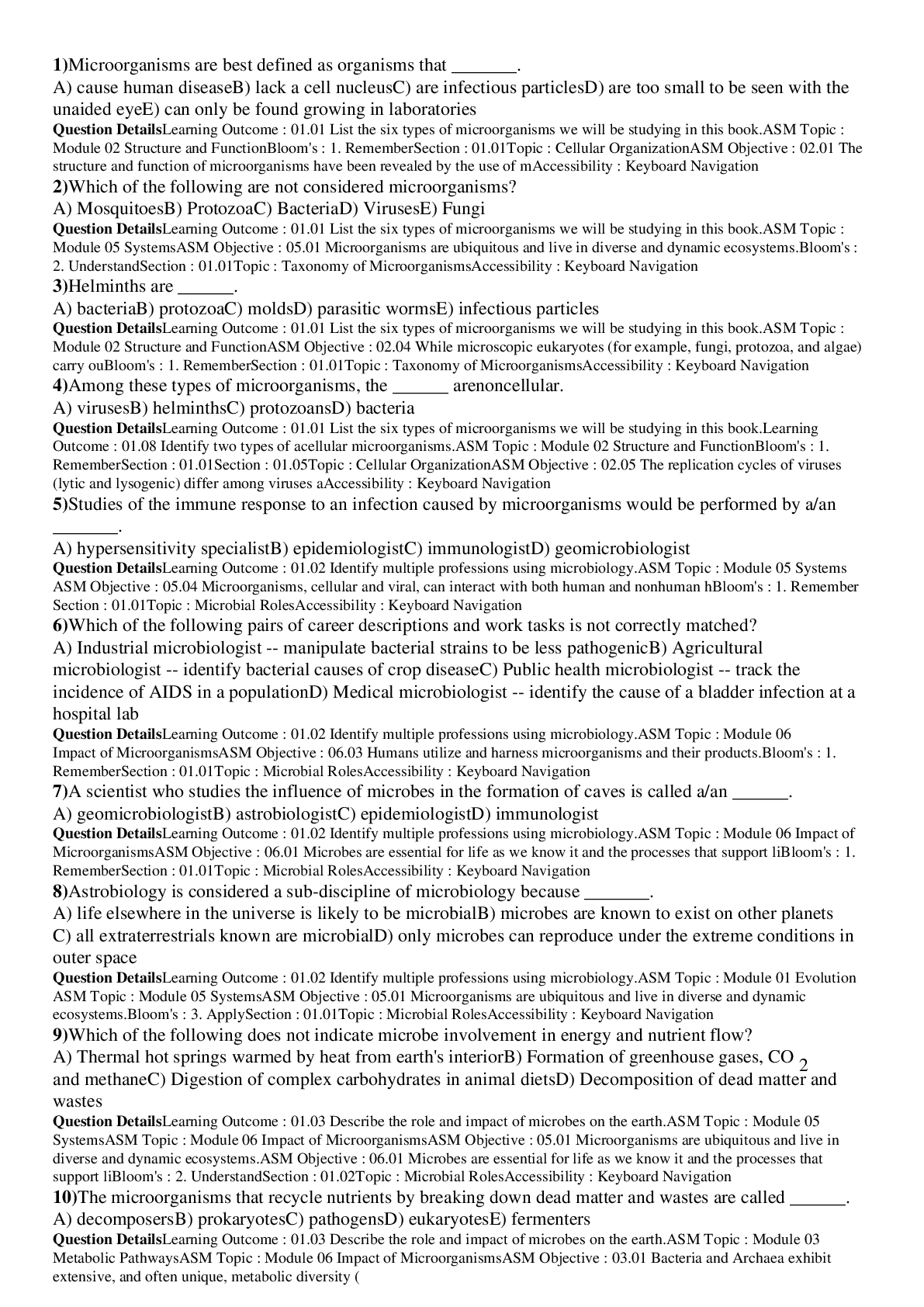
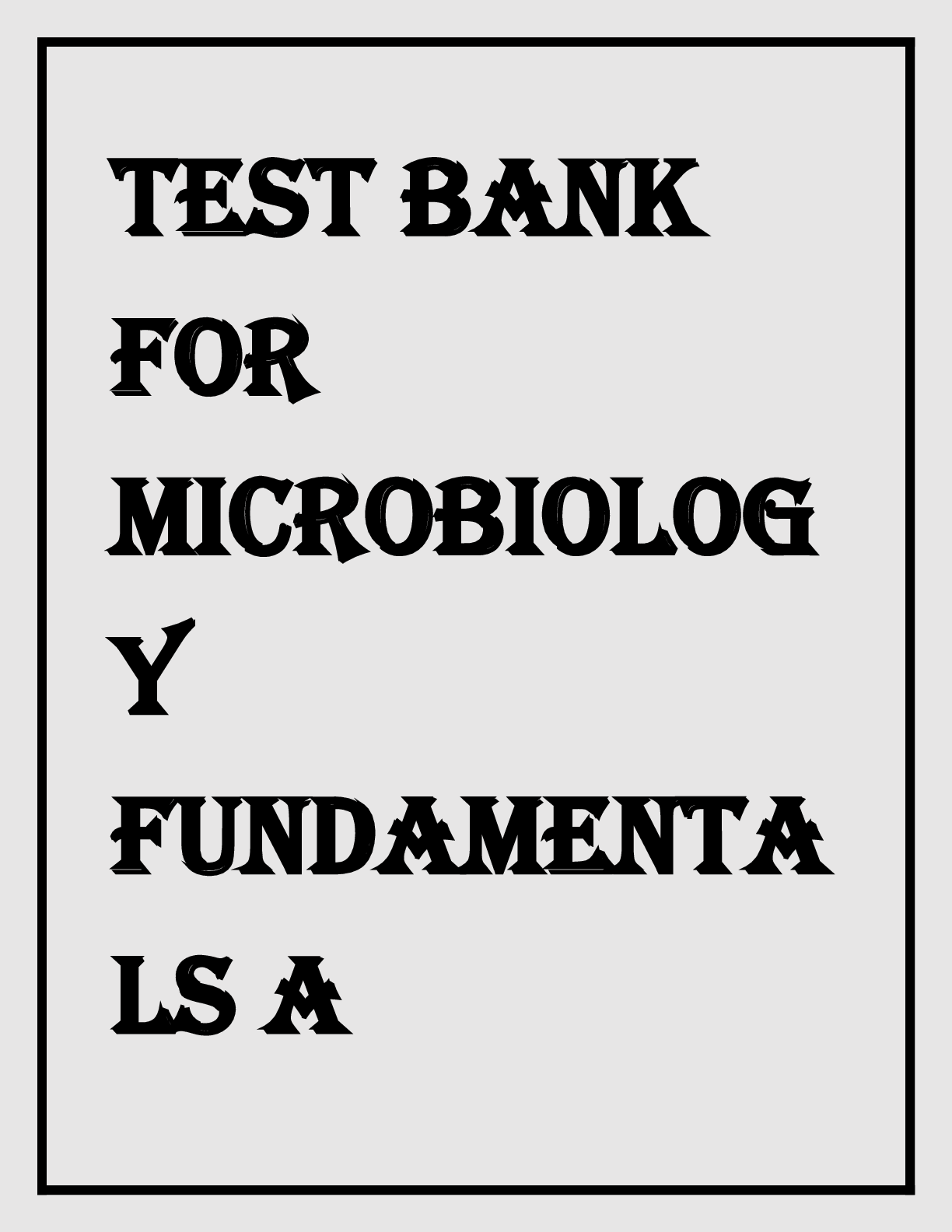
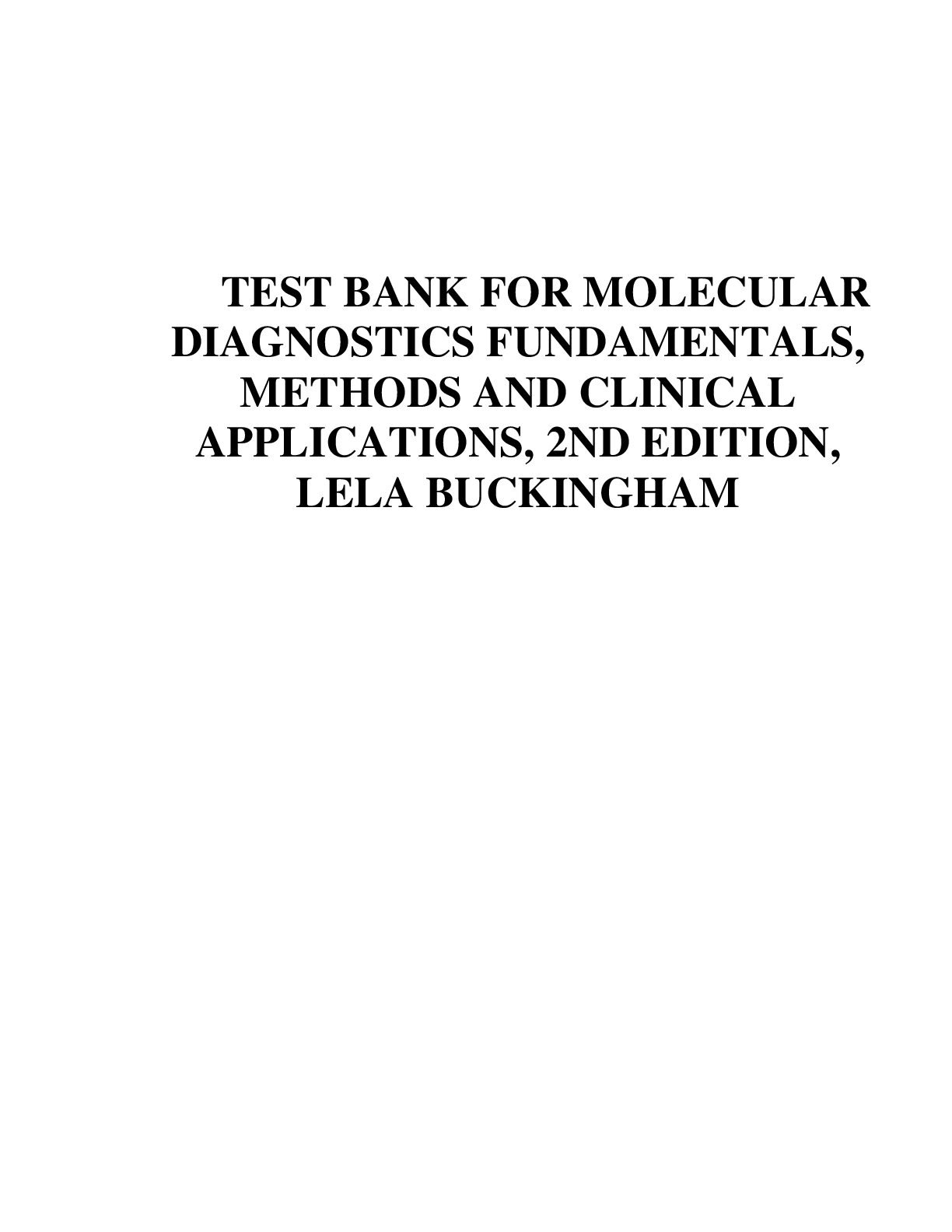



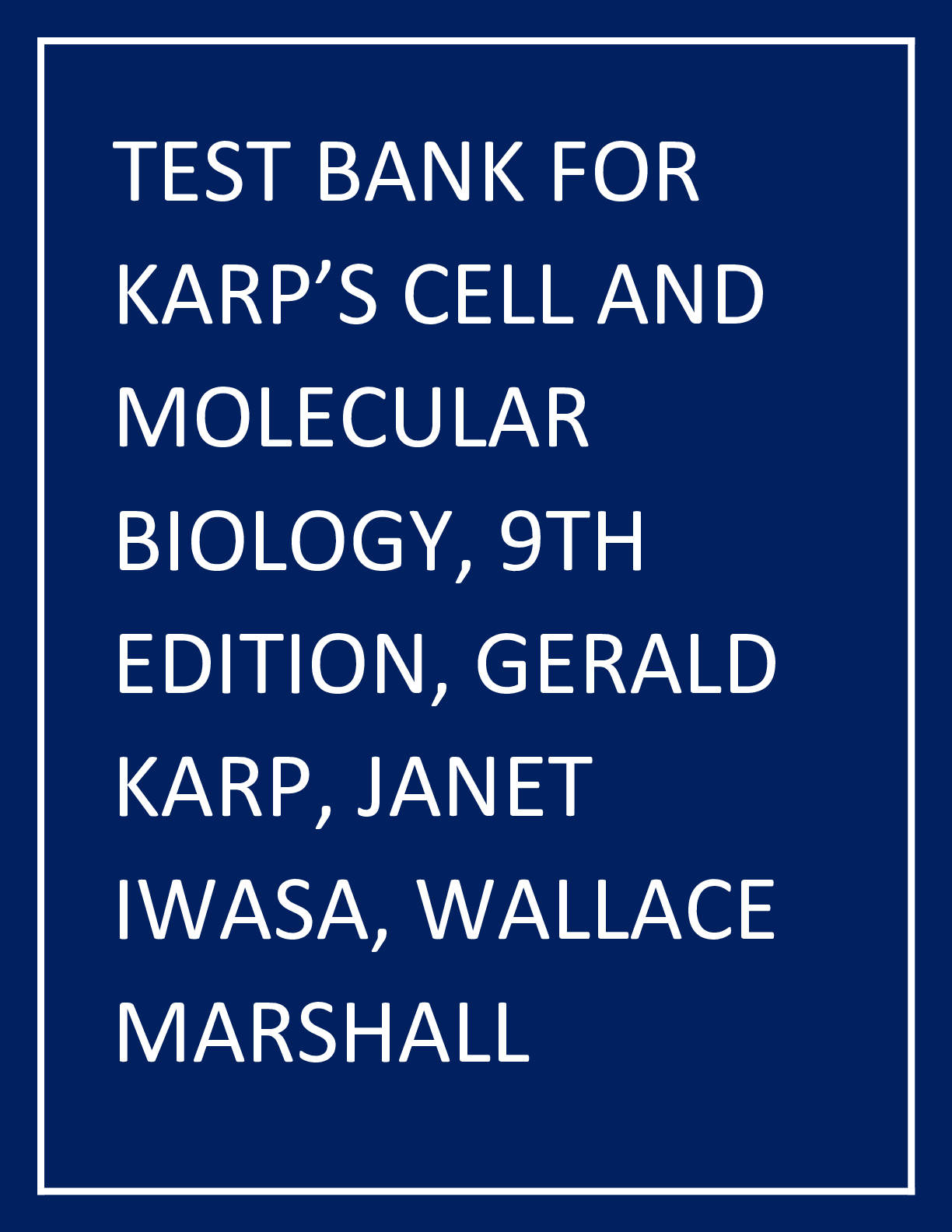
.png)

